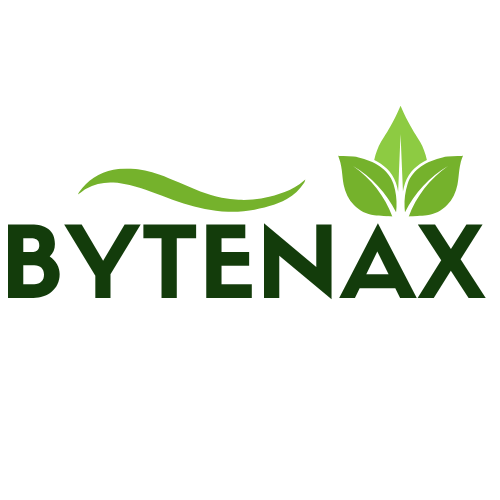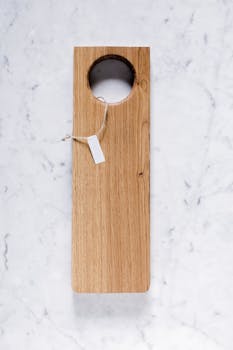Anúncios
Creating food materials at home can be a rewarding experience, allowing you to explore culinary arts while ensuring quality and freshness. The process involves selecting ingredients, processing them into useful forms, and storing them effectively.
This article serves as a comprehensive guide designed for home chefs and food enthusiasts. Whether you’re interested in making your own sauces, pickles, or other food items, the following sections will provide you with clear steps and valuable tips.
From understanding the basics of ingredient selection to effective methods for preservation, you’ll learn how to craft flavorful food items right in your kitchen. Let’s dive into this delightful journey of creating food materials!
Understanding Your Ingredients
To create appealing food materials, start by understanding the ingredients you’ll use. Freshness, flavor, and nutritional value are vital factors to consider. Choose high-quality produce to enhance the end product.
When selecting meat, make sure it’s fresh and sourced from reliable suppliers. For vegetables, look for organic options, as they generally have better flavor and fewer chemicals.
Anúncios
Herbs and spices also play crucial roles. Fresh herbs add vibrancy, while dried spices can deepen flavors. Experiment with different combinations to find your unique taste.
Don’t forget to consider food allergies and dietary preferences. Always keep in mind who will consume these food materials, ensuring everyone enjoys your creations.
With a clear understanding of ingredients, you can start the exciting journey of creating your desired food materials. After this foundational knowledge, let’s explore the various food items you can make.
Anúncios
Homemade Sauces and Condiments
Creating sauces and condiments customizes your dishes, enhancing flavors and elevating your meals. Common sauces include marinara, pesto, and barbecue sauce. Each can be tailored to your taste.
The process often involves blending fresh ingredients. For instance, fresh tomatoes, garlic, and basil create a classic marinara sauce. Adjust seasoning gradually, tasting as you go to ensure perfection.
To extend shelf life, consider canning or freezing your sauces. Store them in airtight containers or jars to maintain freshness. Always label and date your products for easy management.
Experimentation is key. Don’t hesitate to try new ingredients and adjust recipes based on personal preferences. This creative process is part of making your food materials special.
Try making different sauces to complement various meals. Consider creating a sweet chili sauce or a tangy salsa for diverse culinary experiences.
Fermentation Techniques
Fermentation is a fantastic method for preserving foods while enhancing flavors. Commonly fermented foods include sauerkraut, kimchi, and yogurt. This age-old technique also boosts probiotics in your diet.
To begin, gather fresh vegetables and salt. The salt creates an environment for beneficial bacteria, transforming the flavors over time. Keep the mixture in a sealed jar, ensuring it’s submerged to prevent spoilage.
Monitoring is essential; check the fermentation process regularly. Depending on the ambient temperature, fermentation can take anywhere from a few days to several weeks.
Don’t shy away from experimenting with spices during fermentation. Adding garlic, chili flakes, or ginger can create exciting new flavors tailored to your liking.
Once fermented, store your foods in a cool, dark place or the refrigerator to slow down the process. Enjoy your homemade fermented delights for their unique textures and flavors.
Crafting Pickles and Preserves
Making pickles and preserves enhances the life of seasonal produce. They are popular choices for home cooks looking to add zest to their meals. The process requires minimal ingredients, ensuring an enjoyable experience.
Start by selecting ripe vegetables or fruits. Cucumber, carrots, and berries are excellent options for pickling. Prepare a brine with vinegar, salt, and sugar, adjusting sweetness to taste.
Immerse your selected produce in the brine and seal in jars. Sterilizing jars beforehand prevents spoilage and bacterial growth. You can also add spices like dill or mustard seeds for extra flavor.
Refrigerate your pickles or process them for longer-term storage. Meanwhile, preserves require cooking down fruits with sugar, making them ideal for jams or jellies.
Enjoy your homemade pickles on sandwiches, salads, or as a snack. Your preserves can enhance breakfast items or serve as gifts—the options are endless!
Baking Your Own Bread
Baking bread at home not only fills your kitchen with delightful aromas but also gives you control over ingredients. Understanding basic bread-making techniques is essential for great results.
Start with flour, water, yeast, and salt. Mix these ingredients to form a dough, kneading it to develop gluten for a light, airy texture. Be patient, as bread dough also needs time to rise.
Let the dough proof until it doubles in size, indicating proper fermentation. Shape it into loaves or rolls according to your preference before giving it another rise.
Baking at suitable temperatures can make all the difference. Experiment with different types of flours, such as whole wheat or rye, to discover unique flavors.
Once baked, allow the bread to cool before slicing. Enjoy fresh with spreads or as part of a warm meal. Homemade bread adds charm to any dining experience.
Meal Prep and Storage Techniques
Having a solid meal prep plan is beneficial for reducing waste and ensuring you always have delicious food materials readily available. Savvy planning can make cooking efficient and enjoyable.
Start by designing a weekly menu, incorporating various dishes using available ingredients. Cook in bulk when possible and store portions for later use. This not only saves time but also ensures freshness.
Choose the right containers for storage. Glass jars, plastic containers, and vacuum-sealed bags work excellently for retaining flavor. Label each container for easy identification.
Consider freezing items to extend shelf life. Many foods maintain quality in the freezer, meaning you can enjoy your creations well beyond their typical expiration dates.
Meal prepping opens new doors to creativity. Explore diverse cuisines and rotate recipes regularly to keep meals exciting and nutritious.
Utilizing Leftovers Creatively
Being resourceful with leftovers is a sustainable approach to culinary creativity. Instead of discarding excess food, repurpose it into new dishes to minimize waste.
For example, leftover roasted vegetables can be transformed into soups or frittatas. Fridge scrap veggies are perfect for broths, while stale bread makes excellent croutons.
Mix and match ingredients creatively to develop salads, casseroles, or even smoothies. With some ingenuity, leftovers can become star dishes rather than mere afterthoughts.
Storing leftovers properly is crucial. Cool them swiftly and store in airtight containers to maintain freshness and flavor. This practice also supports food safety.
Using leftovers encourages culinary experimentation while reducing waste—it’s an excellent way to maximize your food materials and minimize your environmental impact.
Conclusion
Creating food materials at home is both an art and a science, leading to flavorful and unique culinary delights. The journey begins with understanding your ingredients and exploring various methods of preparation.
From homemade sauces and pickles to baking bread and meal prepping, every step empowers you as a home cook. Remember to embrace creativity while minimizing waste as you craft your culinary masterpieces.
Incorporate these practices into your routine and discover the joy of making your own food materials. Not only will you enhance your meals, but you’ll also create lasting memories in the kitchen.
So, don your apron, gather your ingredients, and embark on your culinary journey. The world of homemade food materials awaits your personal touch!



